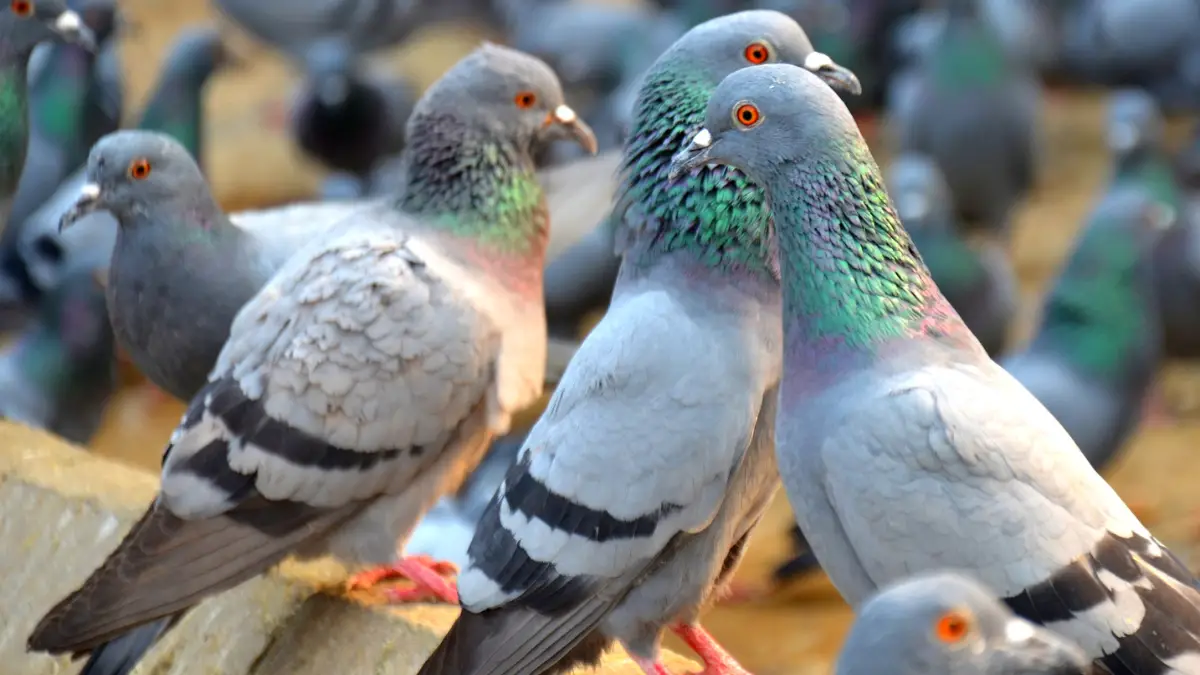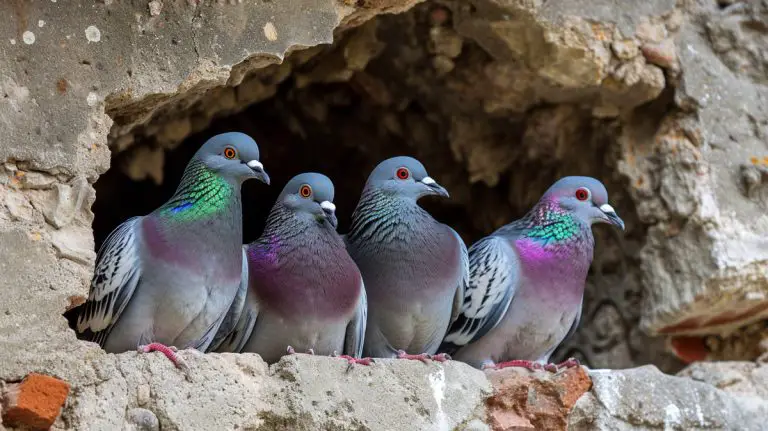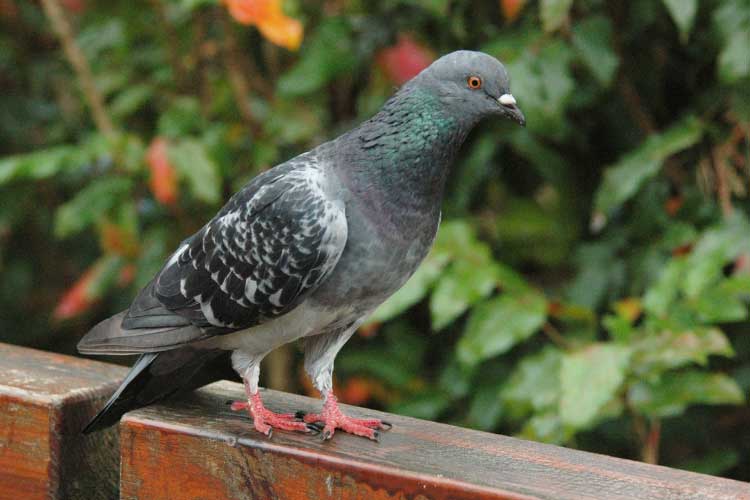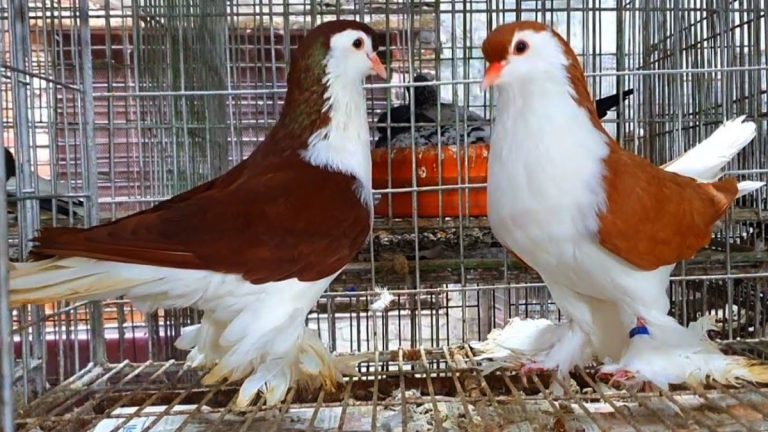Understanding the Pigeon’s Respiratory System and Unique Air Sacs
Pigeons are widely popular as race birds in several regions around the globe. However, this bird’s respiratory system is significantly different compared to other animals and humans.
But why is understanding the pigeon’s respiratory system and unique air sacs important? The respiratory system plays an essential role in the health and survival of birds. Pigeon owners, enthusiasts, and researchers need to understand the operation of this system.
This understanding makes it easier for people to help treat and solve several respiratory diseases and troubles. In this guide, we will discuss the pigeon respiratory system in detail. So, continue reading till the end!
Anatomy and Physiology of the Respiratory System
In the respiratory system of a pigeon, there is a wide range of organs and tissues. These components of the bird anatomy allow it to breathe properly and ensure proper respiratory health. These organs include nostrils, air sacs, and many more.

Let us know about the anatomy of the pigeon respiratory organs in detail.
Nostrils
The beginning of the pigeon breathing system is the nostrils. Pigeons have small hair surrounding the nostrils to prevent dust, dirt, and so on from entering the body.
Trachea
Trachea has a tubular structure that connects the base of the neck to the lungs. The function of the trachea is to pass the air from the nostrils to the lungs of the pigeon.
Syrinx
As the trachea moves to the lungs, it splits into two parts. At the location of the split, there is an organ known as the syrinx. The syrinx is the voice box of the pigeon which produces the birds’ sound.
Bronchi
The bronchi are covered with small hairs paired with cells that produce mucus. This organ helps to filter out the air entering the body of the pigeon and traps dirt, dust, and other harmful particles.
Air Sacs
In the body of the pigeon, nine air sacs are connected to the breathing system. The purpose of the pigeon air sacs is to push the air from the nostrils to the lungs by a one-way flow. These sacs move air to the lungs, where the gas exchange occurs.
Lungs
Lungs are one of the most critical parts of the avian respiration system. The air travels from the nostrils to the lungs, where the gas exchange occurs. In the lungs, oxygen is absorbed into the bloodstream, and carbon dioxide is released. This carbon dioxide is exhaled by the pigeon into the surroundings.
Physiological Processes Involved In Respiration
There are several physiological processes involved in the gas exchange process to ensure healthy results. Here, take a look at the two important processes, pulmonary ventilation, and gas exchange, in avian physiology.
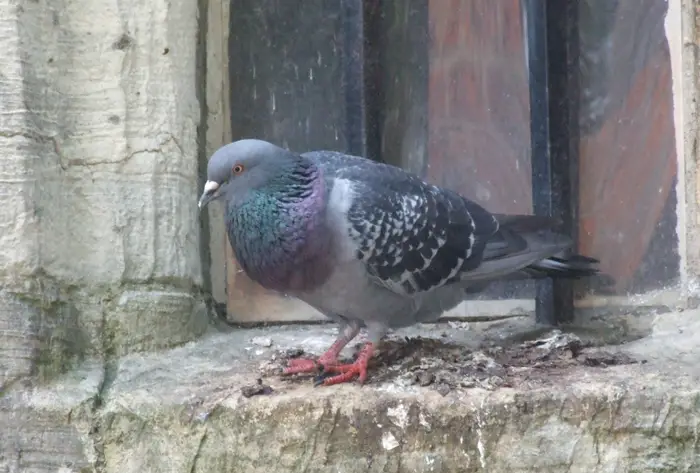
1. Pulmonary Ventilation
The process of pulmonary ventilation refers to the act of breathing. In this process, the air enters the pigeon’s body through the nostrils when they inhale. With a one-way flow, the air is pushed to the lungs, where the gas exchange occurs. The air is then pushed out of the body through the nostrils.
2. Gas Exchange
The gas exchange is the process of removing carbon dioxide from the pigeon’s body. When the air enters the lungs, the oxygen is absorbed into the bloodstream. At the same time, carbon dioxide is released from the bloodstream, which mixes with the air according to the pigeon lung capacity.
Unique Adaptations Of the Pigeon Respiratory System
The respiratory system of pigeons undergoes several distinctive adaptations over time. These adaptations make sure that the gas exchange is successful and can meet the metabolic demands of the bird. Let us take a look at some of these avian adaptations.
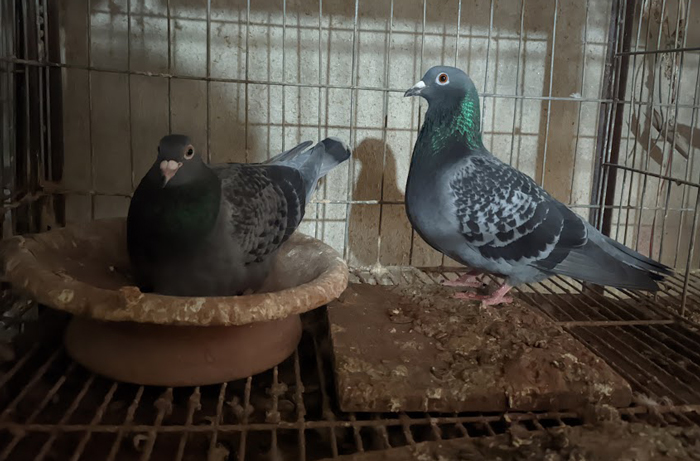
- One-way Air Flow
The nine air sacs connected to the pigeon’s respiratory muscles help the body adapt to a one-way air flow. As a result, the pigeon has enough energy to fly for long periods without trouble.
- High Rate Of Breathing
The body of the pigeons has a high rate of breathing. When the pigeons fly, the breathing rate increases further, which results in more rapid gas exchange. This helps the pigeons to meet their energy requirements.
- Thin Air Sac Walls
The air sacs in the respiratory system of pigeons have thin walls. These thin walls allow the lungs to diffuse in and out easily. As a result, the bird can absorb more energy in its system.
The Importance Of Air Sacs
The air sacs are undoubtedly one of the most crucial components of the pigeon’s respiratory system. There are nine sacs in a pigeon’s body, and each one serves an important function in the body. Check out some of the essential air sac functions.
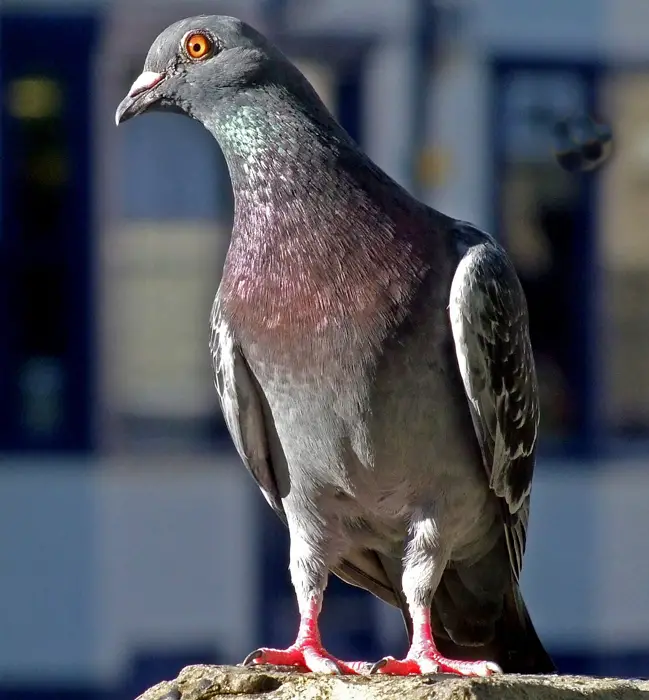
1. Cervical Sacs
The cervical sacs are located near the neck of the pigeon. These are typically connected to the trachea. The purpose of these sacs is to ensure proper storage of air in the respiratory system during both inhalation and exhalation.
2. Clavicular Sacs
Connected to the collarbone of the bird, the clavicular sacs are connected to the inhaling cervical sacs. It works as the pathway for air throughout the respiratory system. It also helps the pigeon maintain a cool body temperature when flying.
3. Interclavicular Sacs
Interclavicular sacs are joined to the clavicular sacs of the pigeon. Its function is to store air during flights. Similar to clavicular sacs, these sacs help to regulate the body temperature of the birds.
4. Abdominal Sacs
Abdominal sacs, as the name suggests, are typically connected to the abdominal cavity of the pigeon. The purpose of these sacs is to regulate the fluids in the body to help the bird maintain its weight and density in the sky. It is also connected to the thoracic sacs of the pigeon.
5. Thoracic Sacs
Last but not least, the thoracic sacs are one of the most important pigeon respiratory organs. These sacs are connected to the lungs of the pigeon, ensuring a constant flow of oxygen-filled air throughout the system. It also helps to ensure a healthy transfer of oxygen in the bloodstream.
Role Of Air Sacs In Pigeon Health
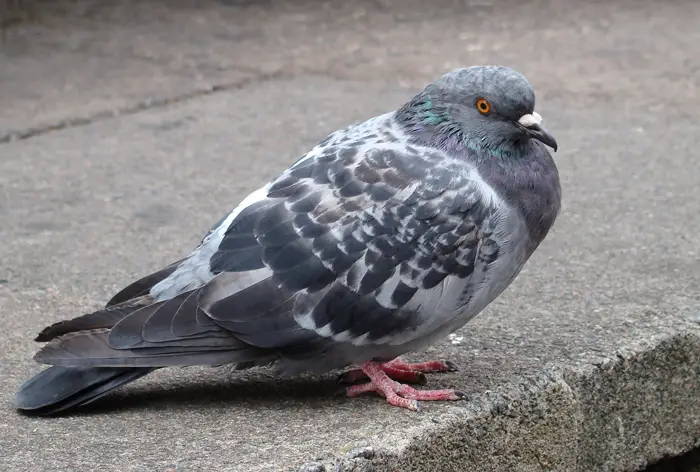
The air sacs in birds play several important roles.
- One of the biggest contributions of air sacs is to maintain a healthy flow of oxygen-rich air. This allows the pigeons to meet the metabolic demands of the body.
- Air sacs also help the pigeons to regulate their body temperature efficiently. This is an essential part of pigeon health as birds generate significant heat when flying.
- Not only that, but the air sacs also help to maintain the density and fluids of the body.
- Additionally, the air sacs play an important role in the sound production of pigeons.
- It also contributes to generating immune cells, preventing the risk of respiratory diseases and infections.
Unique Adaptations To Support Different Environments
Pigeons can fly easily at high altitudes and surroundings. These unique air sac adaptations help support these flying habits without much trouble. Check out these air sacs and respiratory adaptations to support flying in different surroundings.

Air Pressure Regulation
One of the major adaptations is the distribution of air pressure. This helps the birds to maintain constant body pressure when flying. As a result, the gas exchange remains constant and efficient, allowing proper intake of oxygen at high altitudes.
Air Storage
To help the pigeons to fly at high altitudes in the sky, the air sacs have adapted to air storage. The sacs store air in the body of the pigeon, which helps during long flights. It also reduces the overall bird weight, ensuring easier and prolonged flights.
Body Temperature Regulation
As the pigeons continue to rise to higher altitudes, the surrounding temperature begins to drop. The air sacs help to regulate temperature, which helps the bird to maintain a constant temperature throughout the flight.
This helps the pigeon to maintain good bird health while ensuring a proper flight experience.
The Process Of Respiration
There are three main steps in the process of bird respiration. These are inhalation, gas exchange, and exhalation. Let us take a look at the details of these three steps.
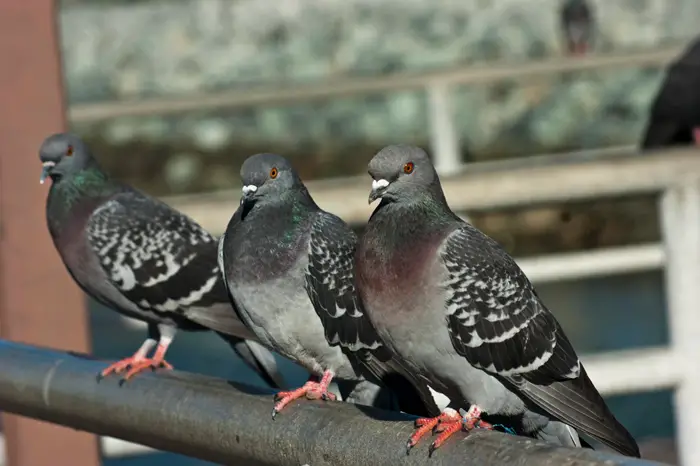
Step 1: Inhalation
During inhalation, air enters the body of the bird through the nostrils. The air moves through the trachea to the lungs. Upon reaching the lungs, the air passes through the bronchi to the air sacs, beginning gas exchange.
Step 2: Gas Exchange
In the process of gas exchange, the air sacs release oxygen into the bloodstream of the pigeons. At the same time, oxygen from the bloodstream is absorbed into the air sacs. This release and absorption procedure completes the gas exchange.
Step 3: Exhalation
After the gas exchange, the air carrying carbon dioxide moves to the lungs. The lungs then force this area out of the body through the trachea. This air is then released to the surrounding area by the nostrils of the pigeons.
Importance Of Proper Respiration
According to avian physiology research, proper respiration is highly important to ensure survival and good health. Efficient respiration and gas exchange ensure that the tissues in the pigeon’s body receive a proper oxygen supply. As a result, the birds can efficiently perform their daily movements and fly easily.
Not only that, but proper respiration also helps to prevent several diseases and infections in pigeons. Respiratory control problems can lead to various health problems, including avian influenza, chronic inflammation, and many more.
Factors Affecting Pigeon Respiration
Several factors can significantly impact the respiration health of pigeons. Here are the details of a few factors affecting respiration in pigeons from bird health institutions.

Air Pollution
Air pollution is a serious threat to respiratory health. This is because airborne particles, such as dust, dirt, etc., can enter the body and cause damage to the pigeon respiratory tract. Not only that, but it also increases the risk of infections and other diseases.
Temperature
Temperature and humidity cause severe effects on the respiration of the pigeons. For proper survival, the birds have to maintain a constant temperature under all conditions. However, in very hot or cold temperatures, the oxygen intake is often affected, which reduces metabolic functions.
Humidity
According to bird conservation organizations, humidity is also an essential factor affecting pigeon respiration. High humidity often makes it difficult to regulate the heat throughout the body properly. Pigeons have to increase their respiration rate to maintain the temperature thoroughly.
If you’re interested in learning more about pigeons, their respiratory system, and their unique air sacs, you may also find our articles on how pigeons choose their mates and the development of pigeon chicks informative. Our article on how pigeons choose their mates explores the fascinating courtship rituals and mate selection process of pigeons. Meanwhile, our article on development of pigeon chicks delves into the various stages of growth and maturation that pigeon chicks go through. These articles provide valuable insights into the behavior and life cycle of these remarkable birds.Conclusion
The pigeon respiratory process is complex and quite different from other animals and humans. It supports the metabolic demands and helps the pigeons to maintain healthy growth and high-altitude flights. Now that you know why understanding the pigeon’s respiratory system and unique air sacs is important, pay attention to ensure proper respiration.
Continued research on the topic is essential to identify the problems and find adequate solutions to breathing issues in pigeons. Further study on the pigeon respiration process will help you to avoid respiration diseases in pigeons while maintaining healthy growth.
